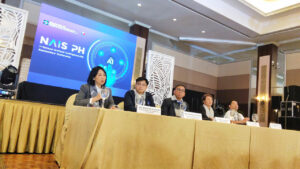The recent earthquakes in Cebu and Davao will not trigger the possible occurrence of the destructive earthquake that could hit Metro Manila, also known as the “Big One,” the Department of Science and Technology (DOST) said on Monday.
“The vast earthquake events were generated by specific earthquake movements or faults [that] are far apart from each other,” Renato U. Solidum Jr., DOST Secretary, told reporters during the press conference of the 1st National Artificial Intelligence (AI) Stakeholders’ Conference.
“If you’re concerned about Metro Manila and its scenario, those faults would not transfer any stress to the (West) Valley Fault,” he added.
The Big One refers to a magnitude 7.2 earthquake predicted to cause widespread destruction and casualties in the country’s capital.
It would be triggered by the West Valley Fault (WVF), a 100-kilometer-long active fault that traverses the highly populated areas of Bulacan, Rizal, Metro Manila, Cavite, and Laguna. The last recorded earthquake of the WVF was in 1658, and it is likely to generate strong tremors every 200 to 400 years, increasing the probability as the year 2058 approaches, according to the Philippine Institute of Volcanology and Seismology (PHIVOLCS) earlier statements.
It also said in a press conference on Friday that the recent major tremors in Cebu and Davao were generated by different sources, namely the Bogo Bay Fault and the Philippine Trench, respectively, which the agency noted are both far from the WVF.
Although the Big One is unrelated to the recent earthquakes in Cebu and Davao, the possibility of its occurrence remains, Mr. Solidum said.
“We have been developing applications not only to inform people about the hazards that could affect their areas, but more importantly, to help LGUs (local government units) prepare before disasters happen,” Mr. Solidum added.
The DOST Secretary also said that the agency is harnessing the power of artificial intelligence (AI) to identify areas vulnerable to earthquakes.
One of its key initiatives is Project OMEGA which combines deterministic ground shaking, landslide hazard modeling, geophysical data, remote sensing, and AI to produce more accurate earthquake hazard maps.
Mr. Solidum also said the agency has invested more than ₱2.3 billion in 113 AI-related projects since 2017 and is likely to continue doing so in the future. — Edg Adrian A. Eva
